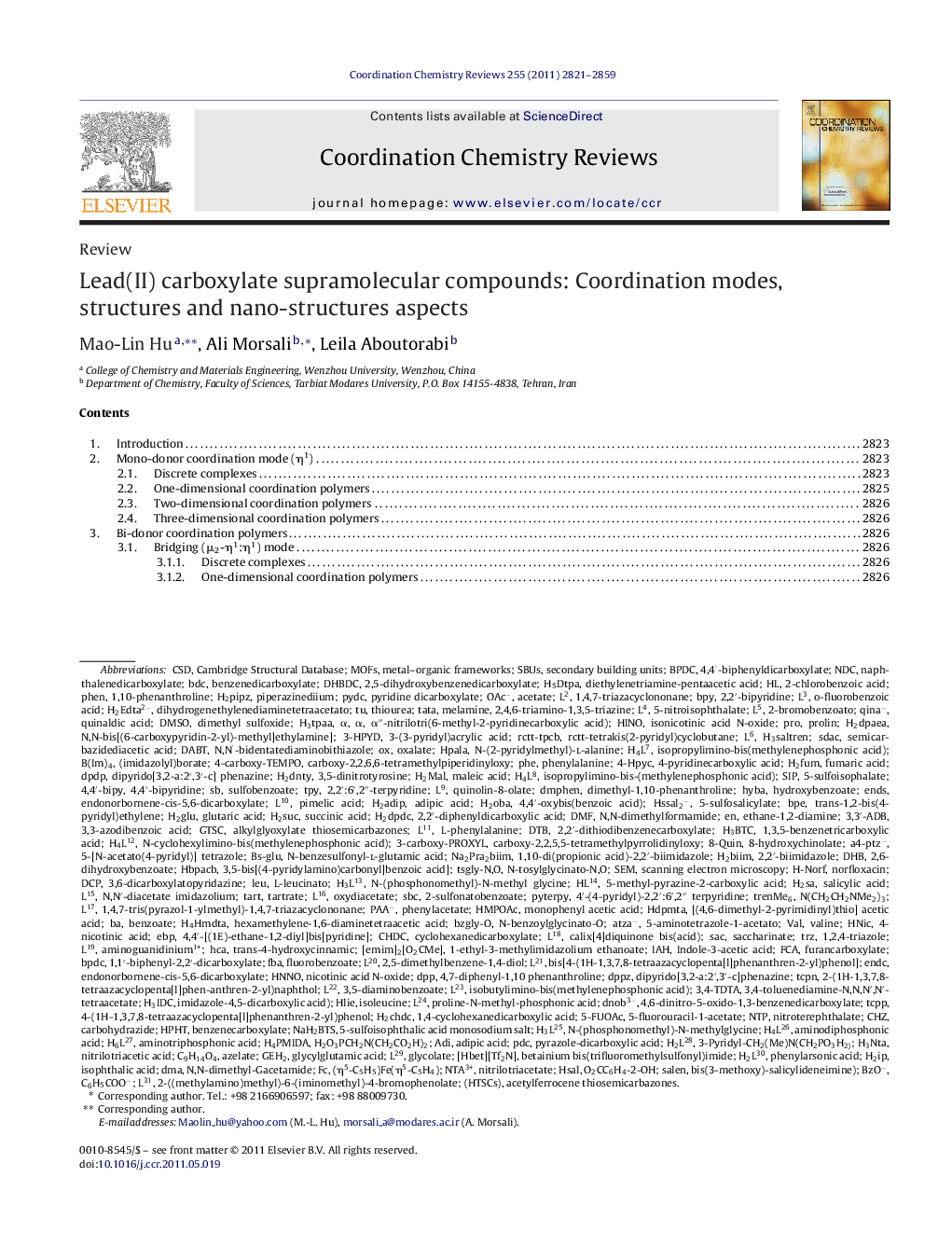| کد مقاله | کد نشریه | سال انتشار | مقاله انگلیسی | نسخه تمام متن |
|---|---|---|---|---|
| 1299159 | 1498776 | 2011 | 39 صفحه PDF | دانلود رایگان |

In recent years, the chemistry of metal-coordination polymers has been advanced due to their diverse topologies and potential applications in smart optoelectronic, magnetic, microporous and biomimetic materials with specific structures, properties, and reactivities. Metal carboxylates have emerged as a large family of open framework materials. Recently, metal carboxylate chemistry has enhanced because of the increasing importance of hybrid inorganic–organic compounds with potential applications in separation, catalysis, and gas storage. So far, research on coordination polymers has considerably been concentrated on incorporation of s-, d-, and even f-block metal ions as coordination centers. As a heavy p-block metal ion, lead(II), with its large radius, flexible coordination environment, and variable stereo-chemical activity, is suitable for formation of unusual network topologies with interesting properties. This review provides an overview of all lead(II) carboxylate supramolecular compounds reported since 1990 and an investigation of their coordination modes, properties and structures. The variety of coordination modes of carboxylate groups increase the strength and stability of the resulting architectures. These modes include (η1), (μ2-η1:η1), (η2), (μ2-η2), (μ3-η1:η2), (μ3-η1:η2), (μ2-η2:η1), (μ3-η1:η2:η1) and (μ4-η2:η2) that have created multiplicity polymeric structures with different dimensions. In this study it was found that carboxylate groups in many of lead(II) coordination polymers form more than a single type of coordination mode and among all of these modes maximum number belonged to chelating (η2) mode.
► This review shows the variety coordination modes of carboxylate groups increase the strength and stability of the resulting architectures.
► It was found that carboxylate groups in many of lead(II) coordination polymers form more than one type coordination mode.
► And among all of these modes maximum number is belonged to chelating (η2) mode.
Journal: Coordination Chemistry Reviews - Volume 255, Issues 23–24, December 2011, Pages 2821–2859